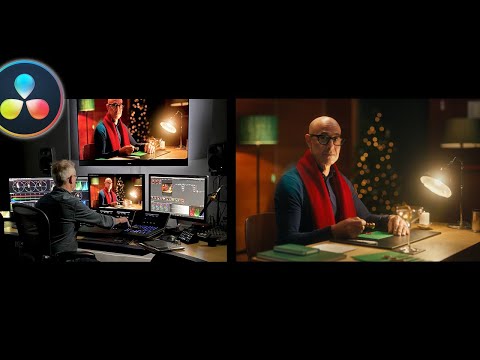Lucrative Career as a Colorist: Job Description and Salary

Colorist Job Description Template
Colorist Job Description A colorist is a professional who is responsible for enhancing and manipulating the colors in visual media such as films, videos, photographs, and animations. They play a crucial role in creating the overall aesthetic and mood of a visual project by utilizing their expertise in color grading and correction techniques. The primary duty of a colorist is to collaborate with directors, cinematographers, and other members of the production team to understand their creative vision and translate it into visually compelling imagery. They analyze the footage or images to identify any color imbalances, inconsistencies, or other issues that may affect the final product. Using specialized software and equipment, they adjust color tones, contrast levels, saturation, and brightness to achieve the desired look. Additionally, colorists are responsible for ensuring color consistency throughout a project, especially in scenes shot at different locations, times, or under different lighting conditions. They may also experiment with various color grading techniques to enhance storytelling and evoke specific emotions. Attention to detail and a strong understanding of color theory are crucial for a colorist. They must possess excellent communication and collaboration skills to effectively work with other professionals in the post-production process. Additionally, staying up-to-date with the latest trends and technologies in color grading is essential for maintaining a competitive edge in the industry. In conclusion, a colorist plays a vital role in the post-production process by enhancing the visual appeal of a project through careful color grading and correction techniques. Their expertise and artistic vision contribute immensely to the overall success of a visual media production.Colorist Responsibilities
Colorist Requirements
How Much Does A Colorist Make?
Colorist Salary
| Country | Average Salary (per year) |
|---|---|
| United States | $50,000 – $150,000 |
| Canada | $40,000 – $120,000 |
| United Kingdom | £25,000 – £70,000 |
| Australia | AU$40,000 – AU$100,000 |
A colorist is a professional who specializes in enhancing and correcting the color of images or videos. They work in various industries such as film, television, advertising, and photography. Colorists play a crucial role in creating the desired mood, atmosphere, and visual style of a project. The salary of a colorist can vary depending on factors such as experience, location, industry, and the complexity of the project. In the United States, the average annual salary for a colorist ranges from $50,000 to $150,000. In Canada, the average salary falls between $40,000 and $120,000 per year. In the United Kingdom, colorists can expect to earn between £25,000 and £70,000 annually. In Australia, the salary ranges from AU$40,000 to AU$100,000 per year. It’s important to note that these figures are just averages and can vary significantly based on individual circumstances. Factors such as the reputation of the colorist, the size of the company or studio they work for, and the demand for their skills can all impact their earning potential. Furthermore, freelance colorists may charge hourly rates or negotiate project-based fees. Overall, a career as a colorist offers the opportunity to work in a creative field and contribute to the visual storytelling process. The salary can be rewarding, especially for experienced and highly skilled professionals.
Colorist Salaries by Country
Top Paying Countries for Colorist
| Country | Average Salary |
|---|---|
| United States | $75,000 |
| United Kingdom | £45,000 |
| Australia | AUD $85,000 |
| Canada | CAD $70,000 |
| Germany | €50,000 |
These are some of the top paying countries for colorists in the film and television industry. The average salaries mentioned here give an idea of the earning potential in each country. It’s important to note that these figures may vary depending on factors such as experience, expertise, and the specific job market. Colorists play a crucial role in enhancing the visual appeal of movies and shows, and their skills are in demand worldwide. As the entertainment industry continues to grow, the demand for talented colorists is expected to rise, making it a promising career choice for those passionate about visual storytelling.
A video on the topic Colorist
Video Source : Darren MostynInterview Questions for Colorist
1. What is the role of a colorist in the film industry?
A colorist is responsible for enhancing the visual aesthetic of a film or video by manipulating and adjusting its colors. They work closely with directors, cinematographers, and editors to achieve the desired look and mood of a project.
2. What skills are required to be a successful colorist?
A successful colorist needs a strong understanding of color theory, excellent attention to detail, and the ability to work collaboratively with a creative team. They should also have a deep knowledge of color grading software and post-production workflows.
3. How do colorists contribute to the storytelling process?
Colorists play a crucial role in enhancing the narrative and emotional impact of a film. Through their color grading techniques, they can create specific atmospheres, convey moods, and guide the audience’s attention to important elements within a scene.
4. What software and tools do colorists typically use?
Colorists commonly use software such as DaVinci Resolve, Adobe Premiere Pro, or Final Cut Pro for color grading. They also utilize specialized hardware, such as high-end displays and control surfaces, to accurately manipulate and adjust colors.
5. How important is communication between a colorist and the creative team?
Communication is vital for a colorist to understand the director’s vision and the desired look of a project. They need to effectively communicate their ideas and recommendations to the creative team and be open to feedback and revisions throughout the color grading process.
6. What are some common challenges faced by colorists?
Some common challenges faced by colorists include working with poorly shot footage, achieving consistency across different scenes and shots, and meeting tight deadlines while maintaining quality. They also need to adapt to changes in technology and evolving industry standards.
7. How does a colorist ensure color accuracy across different devices and platforms?
A colorist uses calibrated monitors and color management tools to ensure color accuracy. They also consider the target platforms or devices where the film will be viewed, making adjustments to account for variations in color reproduction between different screens.
8. Can you explain the difference between color grading and color correction?
Color correction involves correcting technical issues and inconsistencies in footage, such as adjusting exposure, white balance, and contrast. Color grading, on the other hand, focuses on the artistic enhancement of colors to establish a specific look, mood, or visual style.
9. What role does color play in creating a cinematic experience?
Color is a powerful tool that can evoke emotions, set the tone, and enhance the storytelling in a film. It can create a sense of realism or fantasy, differentiate between time periods or locations, and even symbolize characters or themes within the narrative.
10. What is the future of color grading in the film industry?
The future of color grading is likely to involve advancements in technology and software, allowing for more precise and efficient color manipulation. With the rise of streaming platforms and diverse viewing devices, colorists will also need to adapt their skills to ensure consistent and optimized visual experiences across various platforms.






